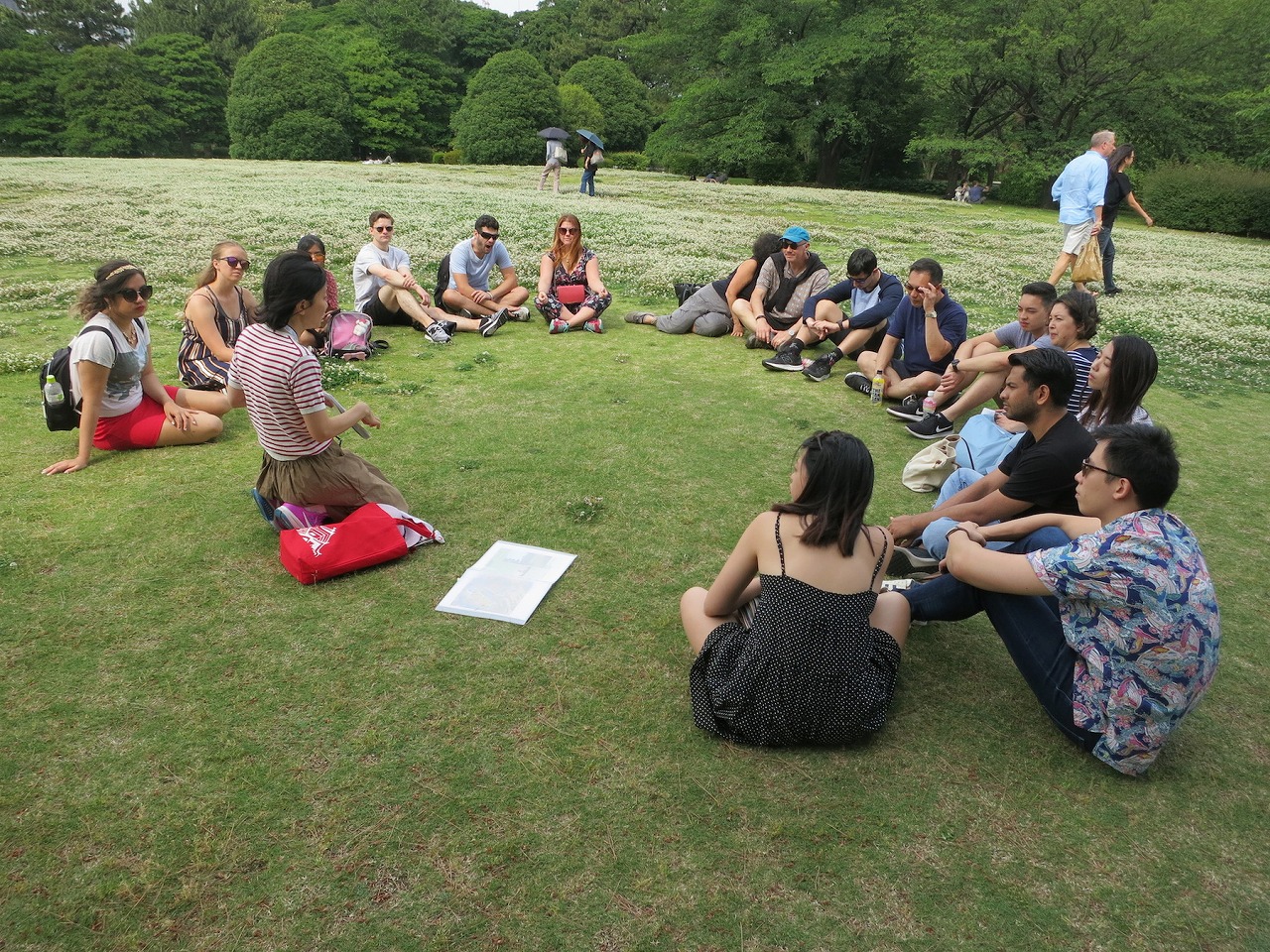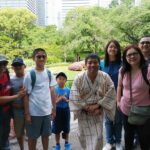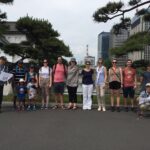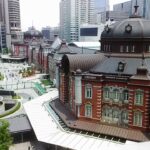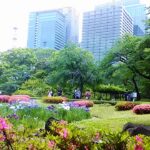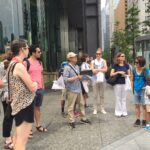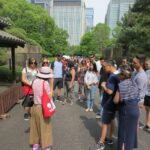Thank you for joining our Tokyo Free Walking Tour in the East Garden of the Imperial Palace.
On that day, June 1, we welcomed around 55 guests from Australia, Brazil, France, Germany, India, Myanmar, Nederland, New Zealand, Philippine, Singapore, Sweden, U.K. and U.S.A.
Finally, June has come.
The month signals as the start of early summer season, which tends to be Japan’s rainiest time of the year.
With sunny and occasionally cloudy sky, we met 55 people in the square of Tokyo Station building located in Marunouch district of Tokyo.
The redbrick train station was overlooking us, and it also seemed to warmly welcome our tour group, as it always does.
Immediately before starting the tour, we made four groups for several participants in line with a few assigned guides.
After a twenty-minute walk from Tokyo Station, we went into the East Gardens of the Imperial Palace, which used be Edo Castle.
This historical garden is situated in a highly urbanized area of Tokyo, which is fully surrounded by busy streets and concrete buildings, whereas this well-preserved historical location can draw us into its peaceful and calm environment.
- Tokyo Station
- hydrangeas
- Iris flowers and azaleas
The remaining parts of the castle buildings in the garden are in comfortable, and protected position by an amazing number of vegetations, which attract visitors’ attention all year round.
Now is the amazing time when a lot of iris flowers and azaleas in vivid colors are blooming in Ninomal garden which used to be the Tokugawa Shoguns’ second residence in the Edo Castle.
Aside from these distinguished flowers, a few hydrangeas secretly blossoming and truly associated with the signs of a rainy season in Japan.
As everyone has learned during the tour, most parts of the magnificent Edo castle were frequently burned down by accidental fires.
Unfortunately, during the Edo period, more than a hundred fires have devastated parts of old Tokyo.
One of these fires is called the Meireki Fire that occurred in 1657 and caused hundred thousands of casualties.
A historical anecdote that alludes to the frequent fires in Edo is “Fires and quarrels are the flowers of Edo.”.
It simply means that fires and quarrels are the highlights of the Edo period.
These stories and historical accounts have truly characterized Edo as the “City of Fires”.
In light of these frequent disparities in the old city, the Edo government organized 48 distinct firefighter groups.
- A firefighter with”matoi”
- A syobodan, local firefighters
Each group was assigned their own territories to protect and mainly engaged in firefighting for the towns people all over Edo city.
These firefighters were chosen for their bravery in tackling fires without any hesitation, and they vowed to protect the communities even if they risked their lives while doing it.
Once, a fire occurred, these distinguished firefighters rushed to the scene and acted their tasks with their pride.
For Instance, a person carrying matoi, like a standing display with his group’s name,
immediately lead his gathering to heated spot and climbed its roof to notify the epicenter of the diverted location.
This strong mentality has been inherited and truly reflects to nowadays fire-fighting service provided by Tokyo Fire Department ,and Syobodan which are organized mainly suburbanized or rural areas in Japan
At present, their works get more hectic year by year because there are diverse disasters happening or expected to happen in this highly urbanized Tokyo.
We really appreciate their painstaking works.
(By Arac)

